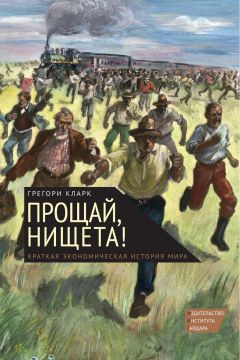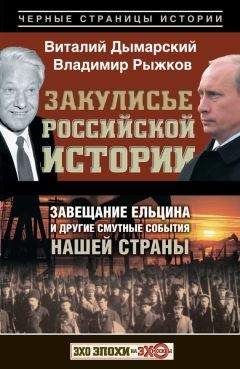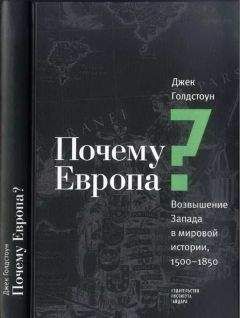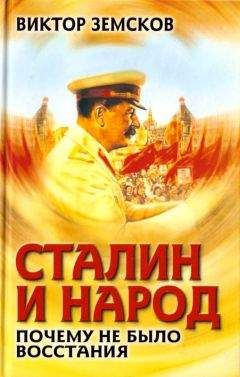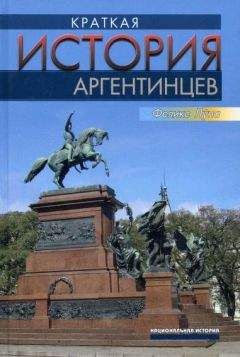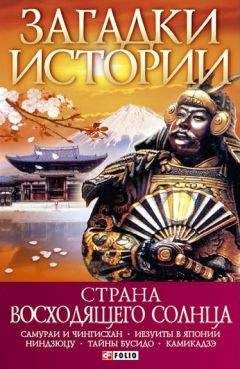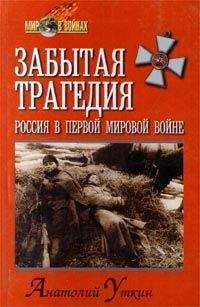Грегори Кларк - Прощай, нищета! Краткая экономическая история мира
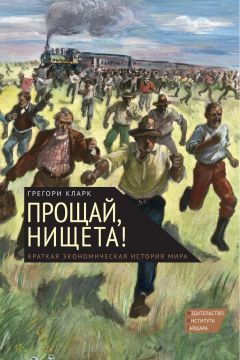
Скачивание начинается... Если скачивание не началось автоматически, пожалуйста нажмите на эту ссылку.
Жалоба
Напишите нам, и мы в срочном порядке примем меры.
Описание книги "Прощай, нищета! Краткая экономическая история мира"
Описание и краткое содержание "Прощай, нищета! Краткая экономическая история мира" читать бесплатно онлайн.
Почему одни страны так богаты, а другие так бедны? Почему промышленная революция — и беспрецедентный экономический рост, который начался вместе с ней, — произошла в Англии в конце XVIII века, а не в каком-то другом месте или в какое-то другое время? Почему индустриализация не сделала весь мир богатым — и почему она сделала многие страны еще беднее? В своей книге "Прощай, нищета!" Грегори Кларк рассматривает эти непростые вопросы и предлагает новый взгляд, в соответствии с которым культура, а не эксплуатация, география или ресурсы, объясняет богатство и бедность народов. Эта книга, бросающая блестящий и трезвый вызов идее, что бедные общества могут стать экономически развитыми благодаря внешнему вмешательству, способна изменить наше понимание мировой экономической истории.
Haines, Michael R. 1995. «Socio-economic Differentials in Infant and Child Mortality during Mortality Decline: England and Wales, 1890–1911». Population Studies 49 (2): 297–315.
Hair, P.E.H. 1971. «Deaths from Violence in Britain: A Tentative Secular Survey». Population Studies 25 (1): 5-24.
Hajnal, John. 1965. «Еигореап Marriage Patterns in Perspective». In Population in History: Essays in Historical Demography, eds. D.V. Glass and D. E.C. Eversley. London: Edward Arnold, pp. 101–143.
Hamilton, Gillian, and Gregory Clark. 2006. «Economic Status and Reproductive Success in New France». Working Paper, University of Toronto.
Hanawalt, Barbara A. 1976. «Violent Death in England in the Fourteenth and Early Fifteenth Centuries». Comparative Studies in Society and History 18: 297–320.
— 1979. Crime and Conflict in Medieval England, 1300-48. Cambridge, Mass.: Harvard University Press.
Hanley, Susan B. 1997. Everyday Things in Premodern Japan: The Hidden Legacy of Material Culture. Berkeley: University of California Press.
Harley, C. Knick. 1998. «Cotton Textile Prices and the Industrial Revolution». Economic History Review 51 (1): 49–83.
Harris, Rivkah. 1968. «Some Aspects of the Centralization of the Realm Under Hammurapi and His Successors». Journal of the American Oriental Society 88 (4): 727–732.
Harvey, Barbara. 1993. Living and Dying in England 1100–1540: The Monastic Experience. Oxford: Clarendon Press.
Hauser, William B. 1974. Economic Change in Tokugawa Japan: Osaka and the Kinai Cotton Trade. New York: Cambridge University Press.
Hawkes, Ernest William. 1916. «Skeletal Measurements and Observations of the Point Barrow Eskimo with Comparisons with Other Eskimo Groups». American Anthropologist, New Series 18 (2): 203–244.
Headrick, Daniel. 1988. The Tentacles of Progress: Technology Transfer in the Age of Imperialism, 1850–1940. Oxford: Oxford University Press.
Helps, Arthur. 1874. Life and Labours of Mr. Brassey, 1805–1870. Boston: Roberts Brothers.
Henderson, W.O. 1965. Britain and Industrial Europe, 1750–1870: Studies in British Influence on the Industrial Revolution in Western Europe. Leicester: Leicester University Press.
Herlihy, David. 1967. Medieval and Renaissance Pistoia; The Social History of an Italian Town, 1200–1430. New Haven, Conn.: Yale University Press.
Heston, Alan. 1983. «National Income». In The Cambridge Economic History of India, Vol. 2: с. 1757 — с. 1970, eds. Dharma Kumar and Meghnad Desai. New York: Cambridge University Press, pp. 376–462.
Heston, Alan, Robert Summers, and Bettina Aten. 2006. Penn World Table Version 6.2. Philadelphia: Center for International Comparisons of Production, Income and Prices at the University of Pennsylvania.
Hill, Kim, and A.M. Hurtado. 1996. Ache Life History: The Ecology and Demography of a Foraging People. New York: Aldine de Gruyter.
Ho, Jun Seong, and James B. Lewis. 2006. «Wages, Rents and Interest Rates in Southern Korea, 1700–1900». Research in Economic History 24: 217–283.
Ho, Ping-Ti. 1959. «Aspects of Social Mobility in China, 1368–1911». Comparative Studies in Society and History 1 (4): 330–359.
Hobbes, Thomas. 1651. Leviathan. London.
Hollingsworth, Thomas H. 1965. The Demography of the British Peerage. London: Population Investigation Committee, LSE.
Homer, Sidney, and Richard Sylla. 1996. A History of Interest Rates, 3rd ed. New Brunswick, N.J.: Rutgers University Press.
Hopkins, Keith. 1966. «On the Probable Age Structure of the Roman Population. Population Studies 20 (2): 245–264.
Houghton, Philip. 1996. People of the Great Ocean: Aspects of the Human Biology of the Early Pacific. Cambridge, U.K.: Cambridge University Press.
Houston, R.A. 1982. «The Development of Literacy: Northern England, 1640–1750». Economic History Review 35: 199–216.
Hudson, Michael. 2000. «How Interest Rates Were Set, 2500 ВС -1000 AD: Mas, Tokos, and Foenus as Metaphors for Interest Accruals». Journal of the Economic and Social History of the Orient 43 (2): 132–161.
Hunter, Richard A., and Ida Macalpine. 1963. Three Hundred Years of Psychiatry, 1535–1860. London: Oxford University Press.
Hurtado, A. Magdalena, and Kim R. Hill. 1987. «Early Dry Season Subsistence Ecology of Cuiva (Hiwi) Foragers of Venezuela». Human Ecology 15 (2): 163–187.
— 1990. «Seasonality in Foraging Society: Variation in Diet, Work Effort, Fertility, and Sexual Division of Labor among the Hiwi of Venezuela». Journal of Anthropological Research 46 (3): 293–346.
Hutchins, John, Richard Gough, and J. B.Nichols. 1796. The History and Antiquities of the County of Dorset, Vol. 1. London: J. Nichols.
Ingram, Martin. 1985. «The Reform of Popular Culture? Sex and Marriage in Early Modern England». In Popular Culture in the Seventeenth Century, ed. Barry Reay. Kent, U. K.: Beckenham, pp. 129–165.
International Labour Organization, Bureau of Statistics. 2006a. Occupational Wages and Hours of Work and Retail Food Prices: Statistics from the ILO October Inquiry. Geneva: International Labour Organization.
— 2006b. Yearbook of Labour Statistics. Geneva: International Labour Organization.
Jackson, Stanley. 1968. The Sassoons. London: Heinemann.
Jacob, William. 1826. Report on the Trade in Foreign Corn and on the Agriculture of the North of Europe. London: James Ridgeway.
Jannetta, Ann Bowman. 1992. «Famine Mortality in Nineteenth Century Japan: The Evidence from a Temple Death Register». Population Studies 46 (3): 427–443.
Jannetta, Ann Bowman, and Samuel Preston. 1991. «Two Centuries of Mortality Change in Central Japan: The Evidence from a Temple Death Register». Population Studies 45 (3): 417–436.
Jeans, James. 1884. «On the Comparative Efficiency and Earnings of Labour at Home and Abroad». Journal of the Statistical Society of London 47 (4): 614–665.
Jenike, Mark R. 2001. «Nutritional Ecology: Diet, Physical Activity, and Body Size». In Hunter-Gatherers: an Interdisciplinary Perspective, eds. Catherine Panter-Brick, Robert H. Layton, and Peter Rowley-Conwy. Cambridge, U.K.: Cambridge University Press, pp. 205–238.
Jevons, F. B. 1895. «Work and Wages in Athens». Journal of Hellenistic Studies 15: 239–247.
— 1896. «Some Ancient Greek Pay Bills». Economic Journals (23): 470–475.
Johnson, A. 1975. «Time Allocation in a Michiguenga Community». Ethnology 14 (3): 310–321.
Johnson, Allen C. 1936. Roman Egypt to the Reign of Diocletian: An Economic Survey of Ancient Rome, Vol. II, ed. Tenney Frank. Baltimore: Johns Hopkins University Press.
Jones, Charles I. 2002. Introduction to Economic Growth, 2nd ed. New York: W.W.Norton.
Jones, Rhys. 1977. «The Tasmanian Paradox». In Stone Tools as Cultural Markers, ed. R.V. S.Wright. Canberra: Australian Institute of Aboriginal Studies, pp. 189–204.
— 1978. «Why Did the Tasmanians Stop Eating Fish?» In Explorations in Ethnoarchaeology, ed. R.A. Gould. Albuquerque: University of New Mexico Press, pp. 11–48.
Jun, By Seong Ho, and James B. Lewis. 2006. «Labor Costs. Land Prices, Land Rent, and Interest Rates in the Southern Region of Korea. Research in Economic History 24: 217–283.
Kahneman, Daniel, Alan B.Krueger, David Schkade, Norbert Schwarz, and Arthur Stone. 2004. «Toward National Weil-Being Accounts». American Economic Review 94 (2): 429–434.
Kalas, Robert J. 1996. «Marriage, Clientage, Office Holding, and the Advancement of the Early Modern French Nobility: The Noailles Family of Limousin». Sixteenth Century Journal 27 (2): 365–383.
Kamps, Christophe. 2004. «New Estimates of Government Net Capital Stocks for 22 OECD countries 1960–2001». IMF Working Paper 04/67. Washington, D.C.: International Monetary Fund.
Kaplan, David. 2000. «The Darker Side of the 'Original Affluent Society.» Journal of Anthropological Research 56 (3): 301–324.
Kaplan, Hillard, and Kim Hill. 1992. «The Evolutionary Ecology of Food Acquisition». In Evolutionary Ecology and Human Behavior, eds. E. Smith and B. Winterhalder. New York: Aldine de Gruyter, pp. 167–202.
Kelly, Robert L. 1995. The Foraging Spectrum: Diversity in Hunter-Gatherer Life-ways. Washington, D.C.: Smithsonian Institution Press.
Kirkaldy, Adam W. 1914. British Shipping: Its History, Organization and Importance. London: Kegan Paul, Trench, Trubner.
Knauft, Bruce M. 1987. «Reconsidering Violence in Simple Human Societies: Homicide among the Gebusi of New Guinea». Current Anthropology 28 (4): 457–500.
Koepke, Nikola, and Joerg Baten. 2005. «The Biological Standard of Living in Europe during the Last Two Millennia». European Review of Economic History 9 (1): 61–95.
Komlos, John. 1993. «A Malthusian Episode Revisited: The Height of British and Irish Servants in Colonial America». Economic History Review 46: 768–782.
— 1998. «Shrinking in a Growing Economy? The Mystery of Physical Stature during the Industrial Revolution». Journal of Economic History 58 (3); 779–802.
— 2004. «On British Pygmies and Giants: The Physical Stature of British Youth in the 18th and 19th Centuries». Working Paper, University of Munich.
Krause, Kate, and William T. Harbaugh. 1999. «Economic Experiments That You Can Perform at Home on Your Children». Working Paper, University of New Mexico.
Kremer, Michael. 1993a. «The O-Ring Theory of Development». Quarterly Journal of Economics 108 (3): 551–575.
— 1993b. «Population Growth and Technological Change: One Million В. C. to 1990». Quarterly Journal of Economics 108 (3): 681–716.
Landers, John. 1993. Death and the Metropolis: Studies in the Demographic History of London, 1670–1830. Cambridge, U.K.: Cambridge University Press.
Landes, David. 1998. The Wealth and Poverty of Nations. Why Some Are So Rich and Some So Poor. London: Little, Brown.
Larsen, Clark Spencer. 1995. «Biological Changes in Human Populations with Agriculture». Annual Review of Anthropology 24: 185–213.
Larsen, Jakob А.О. 1938. «Roman Greece». In An Economic Survey of Ancient Rome, Vol. IV, ed. Tenney Frank. Baltimore: Johns Hopkins University Press, pp. 259–498.
Lee, James Z., and Cameron Campbell. 1997. Fate and Fortune in Rural China: Social Organization and Population Behavior in Liaoning, 1774–1873. Cambridge, U.K.: Cambridge University Press.
Lee, James Z., and Wang Feng. 1999. One Quarter of Humanity: Malthusian Mythology and Chinese Realities, 1700–2000. Cambridge, Mass.: Harvard University Press.
Lee, Ronald D., and R.S. Schofield. 1981. «British Population in the Eighteenth Century. In The Economic History of Britain since 1700, Vol. 1: 1700–1860, eds. Roderick Floud and Donald McCloskey. Cambridge, U. K.: Cambridge University Press, pp. 17–35.
Le Roy Ladurie, Emmanuel. 1981. «History That Stands Still». In The Mind and Method of the Historian. Brighton, Sussex:: Harvester Press, pp. 1-27.
Levine, Ruth, and the What Works Working Group with Molly Kinder. 2004. Millions Saved: Proven Success in Global Health. Washington, D. C: Center for Global Development.
Lindert, Peter H. 1986. «Unequal English Wealth since 1670». Journal of Political Economy 94 (6): 1127–1162.
— 2004. Growing Public: Social Spending and Economic Growth since the Eighteenth Century, Vol. 1. Cambridge, U.K.: Cambridge University Press.
Lindert, Peter H., and Jeffrey G. Williamson. 1983. «English Workers' Living Standards during the Industrial Revolution: A New Look». Economic History Review 36 (1): 1-25.
— 1985. «English Workers' Real Wages: Reply to Crafts». Journal of Economic History 45: 145–153.
Lizot, J. 1977. «Population, Resources and Warfare among the Yanomame». Man, New Series 12 (3/4): 497–517.
Long, Pamela. 1991. «Invention, Authorship, 'Intellectual Property, and the Origin of Patents: Notes Towards a Conceptual History. Technology and Culture 32: 846–884.
Lucas, Robert. 1988. «On the Mechanics of Economic Development». Journal of Monetary Economics 22: 3-42.
Lucas, Robert E. 2002. «The Industrial Revolution: Past and Future». In Lectures on Economic Growth. Cambridge, Mass.: Harvard University Press, pp. 109–188.
Macfarlane, Alan. 1978. The Origins of English Individualism: The Family, Property, and Social Transition. Oxford: Blackwell.
— 1987. Marriage and Love in England: Modes of Reproduction 1300–1840. Oxford: Blackwell.
— 2003. The Savage Wars of Peace: England, Japan and the Malthusian Trap. Basingstoke, Hampshire: Palgrave Macmillan.
Interpretations of Human Skeletal Remains in Archaeological Contexts, eds. Helen Bush and Marek Zvelebil. British Archaeological Reports International Series 567. Oxford: Tempus Reparatum.
Mellink, Machteld J., and J. Lawrence Angel. 1970. «Excavations at Karatas-Semay U.K. and Elmali, Lycia, 1969». American Journal of Archaeology 74 (3): 245–259.
Minge-Klevana, Wanda. 1980. «Does Labor Time Increase with Industrialization? A Survey of Time-Allocation Studies». Current Anthropology 21 (3): 279–298.
Mischel, Walter, Yuichi Shoda, and Monica L. Rodriguez. 1989. «Delay of Gratification in Children». Science 244: 933–938.
Misra, Sanjiv. 1993. India's Textile Sector: A Policy Analysis. New Delhi; Sage.
Mitchell, Brian R. 1995. International Historical Statistics: Africa, Asia and Oceania, 1750–1988. New York: Stockton Press.
— 1998a. International Historical Statistics: Europe, 1750–1993, New York: Grove's Dictionaries.
— 1998b. International Historical Statistics: The Americas, 1750–1993. New York: Stockton Press.
Mitchell, B. R., and Phyllis Deane. 1971. Abstract of British Historical Statistics. Cambridge, U.K.: Cambridge University Press.
Mody, R. K. P. 1951. «Maximising Mill Output and Efficiency: Practical Hints to Jobbers and Mukadams». Indian Textile Journal 61 (731): 718–721.
Mokyr, Joel. 1988. «Is There Still Life in the Pessimist Case? Consumption during the Industrial Revolution, 1790–1850». Journal of Economic History 48 (1): 69–92.
— 1990. The Lever of Riches: Technological Creativity and Economic Progress.
New York: Oxford University Press.
— 2002. The Gifts of Athena: Historical Foundations of the Knowledge Economy.
Princeton, N.J.: Princeton University Press.
— 2005. «The Intellectual Origins of Modern Economic Growth». Journal of Economic History 65 (2): 285–351.
— 2006. «Mobility, Creativity, and Technological Development: David Hume, Immanuel Kant and the Economic Development of Euгоре». In Kolloquiumsband of the XX. Deutschen Kongresses fur Philosophic, ed. G. Abel. Berlin, pp. 1131-161.
Moore, Ray A. 1969. «Samurai Discontent and Social Mobility in the Late Tokugawa Period». Monumenta Nipponica 24 (1–2): 79–91.
— 1970. «Adoption and Samurai Mobility in Tokugawa Japan». Journal of Asian Studies 29: 617–632.
Morgan, Stephen L. 2006. «Height, Health and Welfare in South China over the Past Two Centuries». Working Paper, Melbourne University.
Подписывайтесь на наши страницы в социальных сетях.
Будьте в курсе последних книжных новинок, комментируйте, обсуждайте. Мы ждём Вас!
Похожие книги на "Прощай, нищета! Краткая экономическая история мира"
Книги похожие на "Прощай, нищета! Краткая экономическая история мира" читать онлайн или скачать бесплатно полные версии.
Мы рекомендуем Вам зарегистрироваться либо войти на сайт под своим именем.
Отзывы о "Грегори Кларк - Прощай, нищета! Краткая экономическая история мира"
Отзывы читателей о книге "Прощай, нищета! Краткая экономическая история мира", комментарии и мнения людей о произведении.





